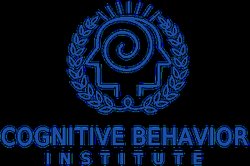While most mental health diagnoses can be treated through various forms of therapy, research has demonstrated that exposure and response(ritual) prevention (EX-RP) is the best-known form of treatment for obsessive compulsive disorder (OCD). OCD often encompasses both obsessions and compulsions.
What is Obsessive Compulsive Disorder?
It is important to understand what these terms mean. Obsessions are the unwanted, persistent thoughts and images that generate anxiety. As a way of reducing these anxiety symptoms, individuals may engage in compulsions which are the acts one feels compelled to perform to prevent feared outcomes from occurring. While these compulsions provide temporary relief, they are the very thing that maintains the obsessive thoughts and anxiety. The way compulsions reinforce the OCD cycle can be shown by the following example. Someone has the thought, “I am going to get sick because I touched the door handle” (obsession) that results in that person immediately washing their hands (compulsion), which temporarily decreases their anxiety. Before long, another obsessive thought comes into mind and they feel compelled to engage in another compulsion, creating a vicious cycle. The pattern of compulsive hand washing reinforces their belief that they did not get sick solely because they washed their hands, preventing the opportunity to learn that the actual risk level is low.
Here is what you can expect from exposure and response prevention treatment. At the first appointment, the therapist will gain a general background and further information into a client’s specific OCD symptoms. Our therapists want to develop a thorough understanding of the specific intrusive and unwanted situations, thoughts, feelings, and bodily sensations that cause your anxiety. We also want to understand what situations may be avoided and the exact compulsions that an individual does to minimize their anxiety and the possibility of negative outcomes. Common obsessions can fall into themes of aggression (like hurting oneself or someone else, violent or horrific images), contamination obsessions (disgust with bodily waste and/or secretions, concern with cleaners, fear they will get ill), sexual obsessions (forbidden or unwanted sexual thoughts/images), religious obsessions (excessive concerns with right and wrong), symmetry and exactness obsessions, and somatic obsessions (fears about developing an illness/disease). Common compulsions include excessive handwashing/cleaning/grooming behaviors, as well as, repeatedly checking to ensure you did not hurt someone or that something bad will not happen, the need to count to reduce negative outcomes, and mental rituals (special words, images, self-reassurance, mental undoing).
Exposure and Response Prevention Treatment
EX-RP intends to have someone sit with the upsetting thoughts and images without avoiding or engaging in a compulsion. Exposure therapy is done in a gradual manner with the coaching of the therapist. The feared situations, thoughts and feelings are ranked, lowest to highest, based on the anxiety these stimuli elicit. EX-RP typically starts with challenging a person’s fears at the moderate level. The therapist and patient begin extended exposure to the feared items without engaging in compulsions. It is important to note that compulsions may not be eliminated completely at the start of therapy, but gradually decreased throughout the course of treatment. Most of us have stepped into an ice-cold pool, only to find that after some time our body adjusts. That is our goal in EX-RP therapy, commonly known as habituation. Habituation occurs when an individual’s physiological or emotional response decreases through repeated exposures to the stimuli. For exposure therapy to be effective, the therapist will ask the client to complete the same exposure exercise performed in session for 25-30 minutes each day until your next appointment. Subsequent therapy sessions will involve the same process of engaging with feared stimuli without engaging in compulsions, but of increased difficulty.
EX-RP treatment includes several components and below are some examples specific to someone’s fear of vomiting.
1. Real life exposures involve extended contact with situations that evoke anxiety. Examples would include hanging out in places considered “high risk” such as hospitals or childcare facilities, looking at pictures of vomit, and watching videos of someone vomiting.
2. Imaginal exposures involve intentionally visualizing and narrating extended images of feared outcomes. Examples may include loss of control and uncertainty regarding whether they will get sick, how long they will be sick or having to go to the hospital and get an IV.
3. Ritual prevention eliminates the compulsions (the things someone does to reduce their anxiety/distress). Examples include excessive handwashing, seeking reassurance from family and friends on whether they’ll get sick, and repeatedly checking temperatures of meat to ensure it is cooked thoroughly.
4. Cognitive Reprocessing focuses on the distorted thoughts that are unconfirmed through exposures. Examples of this include the understanding that stomach pain doesn’t always mean you will be sick and that the risk of vomiting is not as high as one had imagined.
Treatment Benefits
It is important to understand why a therapist may be asking an individual to confront the stimuli they fear the most. Listed below are some of the benefits of exposure therapy:
1. Learning that anxiety does not last forever and decreases over time,
2. Experiencing a reduced need for compulsions,
3. Understanding that feared outcomes are less probable than we imagined,
4. That it is manageable to live with uncertainty, and
5. Thinking about things does not make them more likely to occur
Good candidates for EX-RP are those that meet the criteria for OCD, have OCD as their primary diagnosis, and are motivated to reduce the negative impacts that OCD has had on their life.
If you are experiencing signs or symptoms of OCD and are interested in beginning EX-RP treatment, you can schedule an intake appointment at Cognitive Behavior Institute by calling 724-609-5002.

